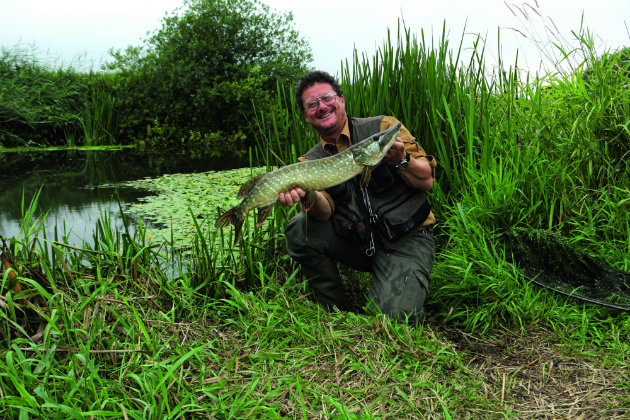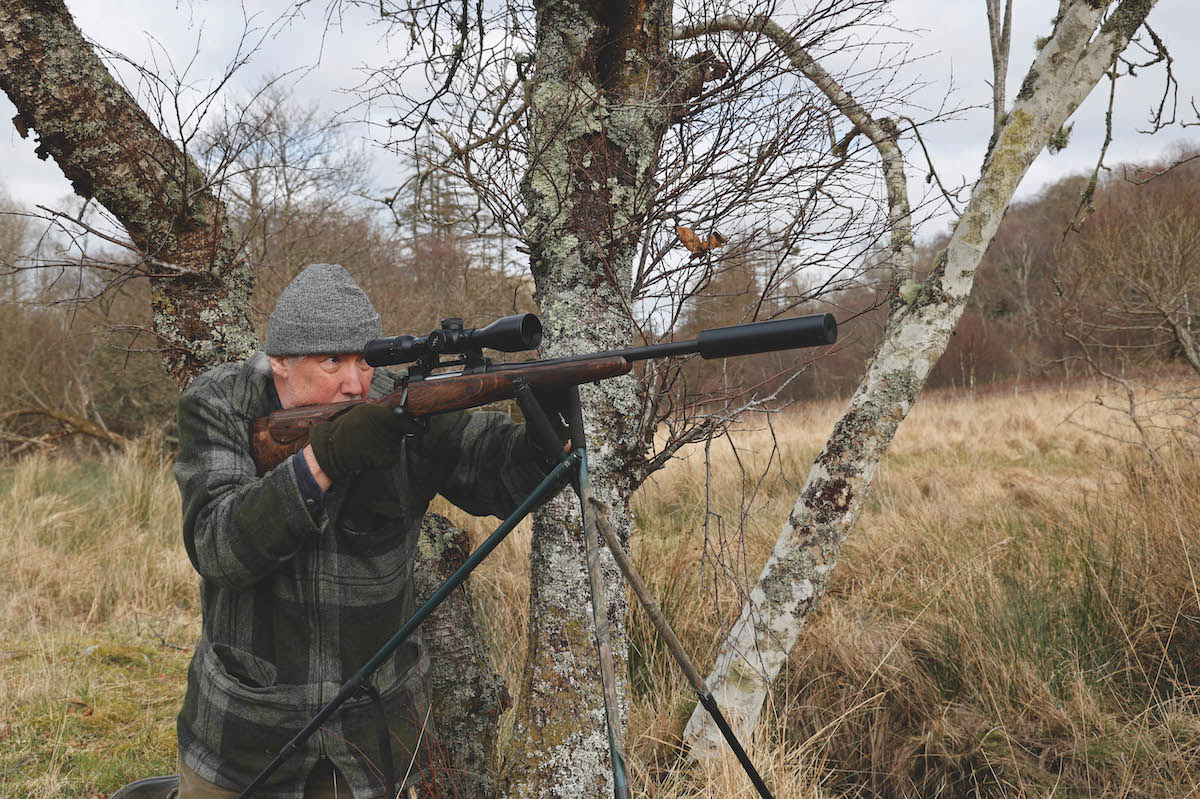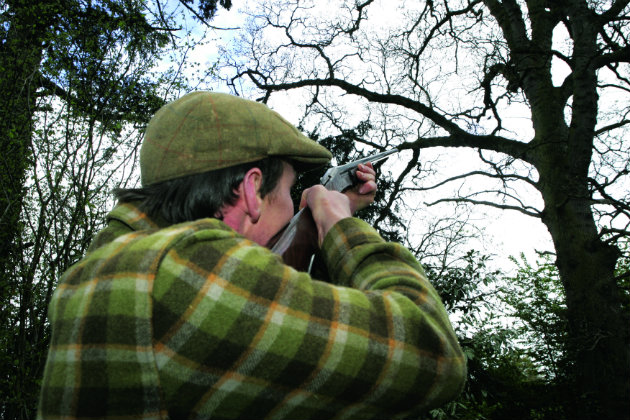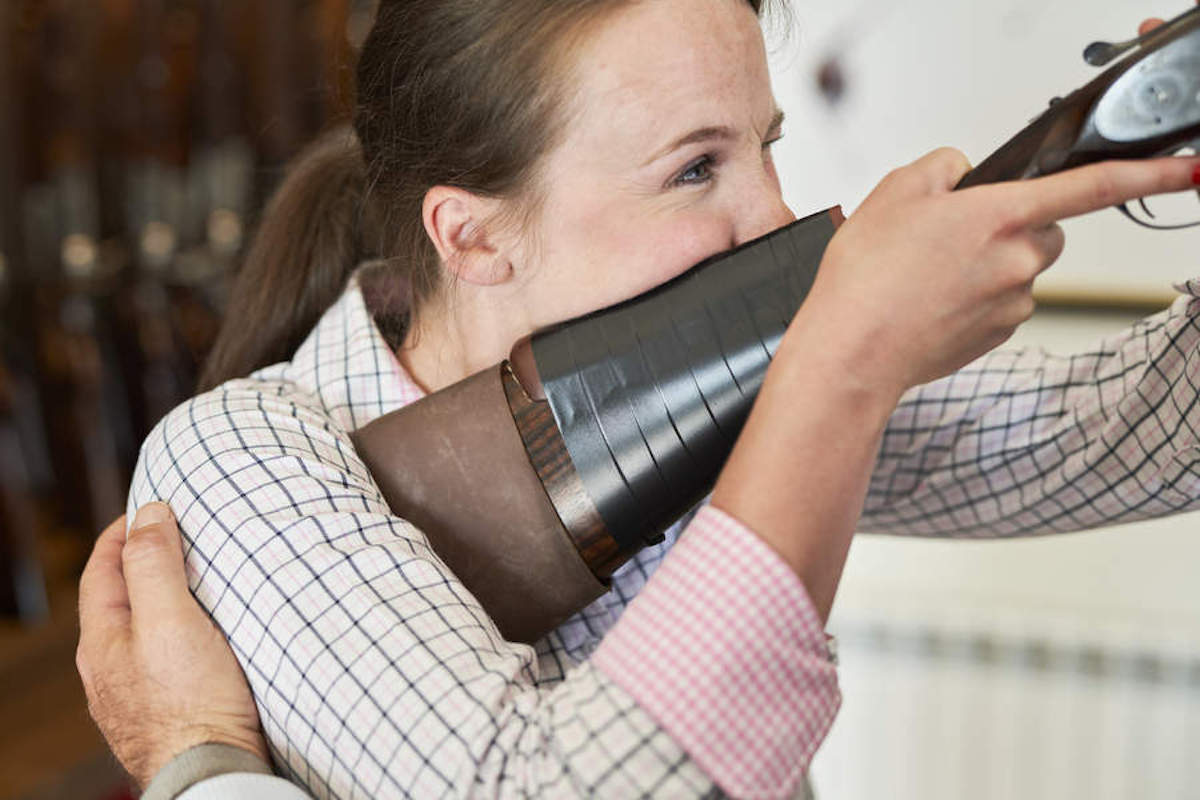Pike fishing – or how to land a freshwater tiger
Lightning fast and with razor-sharp teeth, the pike makes a thrilling adversary for a flyfisherman. Paul Quagliana talks tackle and tactics

Paul shows off a nice pike taken on a home-made fly
Pike fever rises to the surface unexpectedly, like a recurring illness, and there is no telling how long the bout will last. A pike was the first large fish I ever caught when I was nine years old and it was on that day I became infected. My mother had taken me to a small outflow channel where, on a ledgered lobworm, I hooked a 5lb 10oz beauty. I got lucky, it was hooked in the lip and couldn’t cut the line with its razor teeth. A nearby fisherman netted it for me, produced a lump hammer from his car and proceeded to club it. From there it found its way to a taxidermist. All these years later, it still hangs on the wall.

Fishing for pike
The pike – the freshwater tiger
The pike goes by many nicknames, the freshwater tiger is one for example, but the one I love is the “snot rocket”. A tad derogatory perhaps, but it does sum things up. Pike are slimy, streamlined and famous for rapid acceleration.
I used to fish for pike on and off with deadbaits and lures, but beach fishing and trout predominated. Some time last year, though, the “fever” came back with a vengeance and I decided I should dedicate my fishing time to flycasting for the pike that are abundant on the nearby Dorset Stour. An old 10-weight Shakespeare Atlantis Salt rod I had bought with the intention of pollock fishing was dragged out. The perfectly serviceable Snowbee reel I bought with it was cast aside in favour of a shiny, lightweight Redington Rise reel. An expensive Rio pike line saw the bills climbing ever higher along with a heap of exotic flytying materials.

Green, red and yellow are popular colours for pike flies
The first flies I tied were by hand without a vice using cotton and superglue. They were crude but effective (but don’t attempt flytying after a visit to the pub: superglue and alcohol don’t mix in my experience). The beauty of tying pike flies if you are a novice is that they don’t require tremendous skill, and being large they are easier to work on. I admit that my creativity perhaps got the better of me and several ended up looking like something you would find perched on a branch in Borneo, but what joy to catch a pike with them. With regard to colours, many pike anglers seem to favour green but I have found that red-and-yellow combinations have been more successful.
Seasons and the weather
So, what tips can I offer that I have gleaned from my adventures? First, know your area and how it is likely to be affected by the time of year and the weather. Though pike fishing is often seen as a winter activity, the river Stour can flood for weeks on end in the late autumn and winter, and when rivers are flooding or dirty they are generally unstable for pike with a fly. So keep an eye on the weather to avoid a wasted trip, especially if you have to travel any distance.
Similarly, after heavy rain in the summer I call my part of the Stour the Amazon, because the vegetative growth along its banks is tremendous. Great candelabras of purple loosestrife adorn the banks, along with dense swathes of nettles, rendering much of the river unfishable, while duckweed smothers the pools and rafts of lilypads provide ambush points for pike.
Flycasting tips
Before flinging your fly to the other side of the river, drop it a few inches out from the vegetation in front of you. The pike will often lurk under it and some have attacked so close that I have been splashed by the initial strike.
Other times try letting the fly sink, and waggle it, allowing it to rise and fall. Pike will sometimes slash at it instantly, or emerge slowly and imperceptibly from the dark water to inspect it. When this happens it is heart-stopping; I don’t know any other fish that can appear so sinister yet simultaneously possess such grace. A long-handled landing net is vital. Mine extends to 9ft and serves several purposes. I can use the butt end of the handle to check for solid ground; it enables you to reach over vegetation to net a pike; and it is remarkably useful for freeing flies caught in branches, which in this kind of close-quarters “jungle-warfare fishing” happens often.

The pike’s nicknames include, among other things, the freshwater tiger and, Paul’s favourite, the snot rocket
Remember to put your mobile phone and wallet in a waterproof bag. Rivers often have some very deep undercut banks and you need to take great care when approaching the banks. This is certainly the case on the Stour, where I have fallen in twice — it’s quite pleasant on a hot day but it was hard to get back out because the water and mud were so deep that I couldn’t easily push myself up.
To crimp or not to crimp
For unhooking the fish, I carry two pairs of forceps, one short and one longer. The shorter ones are easier to use but the longer ones are there if I need them. Whether you crimp barbed hooks is up to you. Some anglers say that barbless hooks can slip and cause more damage, but they are easier to remove. I hooked four fish on crimped barbs that I then lost when they dived into weedbeds or lilies.
I am guessing that if lip-hooked, the forward momentum of the pike may flick the hook out when the line hits a lily stem. I would rather enjoy the explosive “take” and then lose the fish than have the job of extracting the pike from the lilies.
Landing the pike
When landed, the pike should be placed on the grass (still in the net) where it cannot damage itself if it flaps. Place it on its back and gently lift the gill cover, which will cause the mouth to open. Don’t stick your fingers between the gill rakers, though, as this may damage both the fish and your fingers.

This pike has inhaled the fly, so be sure to use a long wire trace – 18in is recommended to get past those teeth
When you have removed the hook, clamp the forceps to it. In the heat of the moment it can be easy to toss the forceps down in the long grass and lose them, but if they are clamped to the fly hook you will always find them.
After your fish has posed for a picture, support it in the water until it is ready to swim off. If you cannot get near the edge, put it back in the net (which should be a large one, by the way), lower it into the water and, when it gives a wiggle, gently tip it out of the net.
Where to find your trophy
Any form of cover may hold a pike, though sometimes the obvious spots such as fallen trees, lily beds or overhanging banks produce nothing, while seemingly blank areas can yield a fish. Look for any reeds growing up through the surface of the water and any areas out of the main current. Search your spot thoroughly before moving on.

Purple loosestrife growing along riverbanks is a likely spot to hold a pike, as it will lurk underneath
The best way of locating pike is by talking to other anglers. One angler’s loss is another one’s gain and if you meet a match fisherman cursing about pike seizing his roach as he reels them in, you have hit the jackpot. Wait for him to leave or, if it is late, go back at first light.
I hooked seven pike from the same spot this way, landing four and losing three. I have since returned to the same spot time and again and have never caught another pike there. The struggle with a hooked roach can attract pike, but how far upstream and downstream it will pull them I honestly don’t know. In a former matchman’s swim I tend to strip the fly back fast, waggling the rod tip, trying to simulate a struggling fish and the “takes” are normally very aggressive.
These are just a few things I have learned over the past year in my fly piking progress. There are myriad places to try for pike but the Stour is my favourite, the section I fish is a beautiful stretch of slow water where dragon flies and kingfishers ply their trade. While some sections are private, there are several clubs offering miles of water for not much money, and day tickets are also available. If you have not yet tried this type of fishing before, give it a go. The snot rocket won’t disappoint.
Kit for pike fishing
With reeds growing up to 8ft high, as well as branches and lily pads, tough gear and accurate casting are essential. The gear I use is perhaps a bit too heavy but it means I can clamp down on a fish and keep it out of a snag. I use fluorocarbon leaders of 20lb breaking strain instead of the 30lb leaders I had been using. The danger is that if you make the leader too strong you may have difficulty snapping it if you get snagged and may damage your expensive fly line in the process.
For the trace I use 30lb Rio pike wire, it’s not cheap but it is supple enough to knot if I tie the knot slowly to prevent curling. I don’t use a swivel any more to attach the wire trace to the fluorocarbon, instead I use an Albright knot, which has been excellent. A clip is used to attach the fly; but you need to watch it if you hit reeds or branches on the back cast, as it can spring open.
Make sure your wire trace is long enough — 18in is often recommended. Don’t be fooled into thinking the pike will be hooked in the lip, in fact it will often inhale the fly, so a long trace is vital to get past its teeth.








